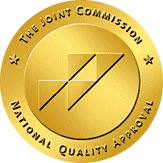Key Success Factors in Managing Multi-Vendor Staffing

Rapid change is occurring in the contingent workforce. Understanding industry best practices is crucial for efficiently managing your contingent workforce program as businesses strive to increase productivity, reduce expenses, manage risks, and prioritize vendor relationships. Nowadays, a growing number of companies are depending on a contingent workforce with a diverse range of professional and cultural backgrounds, which has resulted in an increase in multi-vendor staffing programs.
What is a Multi-Vendor Contingent Staffing Program?
A multi-vendor contingent staffing program is a workforce management strategy in which a business or organization partners with multiple staffing vendors to manage and source contingent workers. Instead of relying on a single agency, these businesses implement vendor management strategies to distribute their hiring needs across a network of vendors, thus amplifying talent quality, accelerating hiring speed, and optimizing costs efficiently.
The key features of a multi-vendor contingent staffing program include:
1. There are multiple suppliers: Various staffing agencies collaborate or compete to fill the open available roles.
2. Vendor neutrality: Often, businesses do not give preference to a single vendor. The selection is purely based on selection.
3. Managed via MSP: Various companies use a managed service provider (MSP) or a vendor management system (VMS) to streamline and monitor vendor performance and compliance.
Key Success Factors for Managing Multi-Vendor Programs:
In the dynamic workforce landscape, organizations are massively turning to multi-vendor contingent staffing programs to meet the current evolving talent demands. This approach provides access to a diverse talent pool, greater scalability, and competitive cost benefits. Additionally, it also introduces a new layer of complexity. Effectively managing multiple staffing vendors demands strategy, alignment, constant communication, and highly performance-driven data. Without the presence of the right framework and awareness of evolving staffing industry trends, organizations expose themselves to certain risks such as compliance issues, delays, and poor quality hires.
Some of the key success factors for managing multi-vendor programs include:
- Communication:
Information exchange, problem solving, and building mutual trust all depend on open and transparent lines of communication.
- Performance Metrics:
By defining and tracking key performance indicators (KPIs), vendor performance can be objectively assessed and areas for improvement can be identified.
- Vendor Onboarding:
A clear onboarding procedure guarantees the seamless and effective integration of new providers into the program.
- Risk management:
To reduce interruptions and guarantee program success, it is crucial to identify and reduce possible risks related to multi-vendor programs.
- Payment Procedures:
Accurate and on-time vendor payments are guaranteed by streamlining and automating payment procedures.
- Vendor Relationships:
Long-term success depends on establishing and preserving solid relationships with vendors that are founded on cooperation, trust, and mutual gain.
- Customer input:
Using ratings, reviews, and surveys to get input from customers guarantees customer happiness and helps pinpoint areas that need work.
- Data Analytics:
Data-driven decision-making and continuous improvement are made possible by using data analytics to analyze important metrics, discover trends, and evaluate vendor performance.
Choosing the Right Vendor Partners
The first step in implementing a successful multi-vendor staffing program is choosing the appropriate vendor partners. Not all staffing companies are made equal, and selecting partners who share your industry, labor expectations, and business goals is essential to achieving success.
The key criteria to consider include:
- Industry expertise:
Seek out suppliers with expertise in your industry or line of work. Their topic expertise frequently results in greater applicant quality, quicker sourcing, and better culture fit.
- Geographic scope:
Make sure the vendor has a solid grasp of local labor regulations and talent markets and can assist with hiring in all of the locations you need, whether they are regional, national, or international.
- Legal standards and compliance:
Select partners who place a high value on contingent workforce legal issues and ethical hiring procedures, correct labor classification, and legal compliance. By doing this, the dangers of audits, misclassification, and co-employment are reduced.
- Technology capabilities:
To increase turnaround time, monitor KPIs, and easily interface with your own systems, top-performing vendors use tools including automated processes, VMS platforms, and applicant tracking systems.
- Performance history:
Examine their past data, including customer satisfaction, time-to-hire, fill rates, and quality of hire. Regular reviews and transparent performance reporting should be accepted by vendors.
- Communication and cultural fit:
True partners are responsive, proactive, and in line with your expectations, values, and communication style.
How does Denken Solutions add value?
Having the correct partners is crucial for handling the intricacies of a multi-vendor contingent workforce efficiency. A reputable brand in contingent workforce solutions, Denken Solutions assists businesses in streamlining vendor administration while enhancing workforce compliance and quality.
Working with Denken Solutions entails a series of unique features such as:
- Proven contingent staffing expertise: With years of experience in a variety of industries, Denken is an expert in finding qualified candidates fast and effectively, especially for specialized or in-demand positions.
- Technology-driven process: Denken is a valued vendor in any multi-supplier environment because they use cutting-edge tools and integrations to track important performance data, expedite recruitment procedures, and shorten time-to-fill.
- Flexible engagement models: Denken can adjust to your demands while keeping costs under control and delivering results quickly, whether you require project-based contractors, IT staff augmentation, or scalable workforce assistance.
- Compliance & quality assurance: Denken lowers the operational and legal risks frequently connected to contingent workforce programs by making sure all placements adhere to strict compliance guidelines, from worker classification to onboarding.
- Collaborative vendor approach: Denken works with clients to comprehend their business objectives and match talent solutions appropriately, going beyond simply “filling roles.” This is a crucial quality for success in a multi-vendor setting.
Conclusion:
Multi-vendor contingent staffing programs have emerged as a strategic necessity for businesses looking for cost effectiveness, agility, and access to a varied contingent talent pool as workforce demands change. However, enrolling numerous staffing contractors is not enough to achieve success; proactive communication, strategic execution, and performance-driven oversight are necessary.
To fully realize the potential of your contingent workforce model, every detail needs to be properly planned, from choosing the best vendor partners and establishing precise SLAs to utilizing technology and guaranteeing compliance.
This complexity can be made simpler by collaborating with seasoned staffing companies like Denken Solutions. They help firms scale more quickly while preserving quality, transparency, and alignment with corporate objectives thanks to their extensive experience, tech-enabled procedures, and dedication to compliance.



Popular Blogs




What to Read Next

Cost-Effective Ways to Source Contingent Talent

Career Guide for Commissioning Coordinators

Smart Scaling with Stability and Agility
Let's Team Up

Become Our Customer















